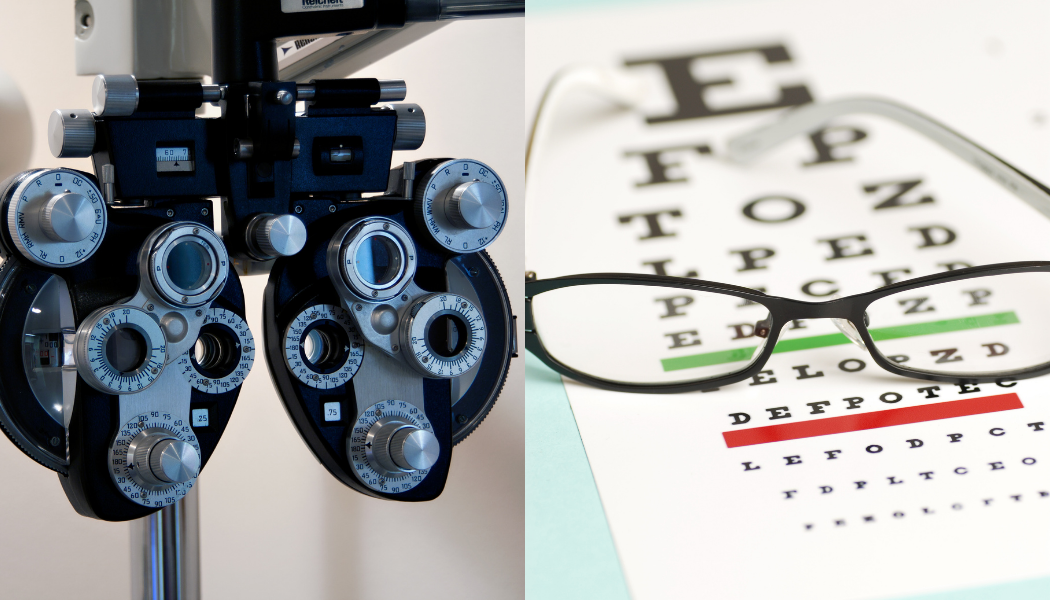
Comprehensive eye exam each year is the best way to enjoy good vision throughout your life. Many eye and vision problems have no obvious signs or symptoms. As a result, individuals are often unaware that problems exist. Early diagnosis and treatment of eye and vision problems are important for maintaining good vision and eye health, and when possible, preventing vision loss.
Tests Used during Eye Examinations
There are many common tests your eye doctor uses during an eye examination. Some of these are listed below:
Vision testing involves making a person read standard sized letters at a
specified distance. The doctors record the
vision as a fraction e.g. 6/6 etc. The top number denotes the distance (in
feet) at which the patient has been able to
read the particular sized letter while the bottom number indicates the
distance at which a normal person is expected to
read the same letter. Near vision is tested separately in good illumination
using special test charts held at normal
reading distance. The testing is done with each eye separately. The doctors
often test the vision using a pinhole. This
gives an estimate of improvement possible with glasses. The patient in place
of glasses cannot use the pinhole.
This test uses an instrument referred to as a phoropter. It looks kind of
like a space age eye examination machine with
varying lenses. Your eye doctor will use this instrument to test various
lenses against your eyes, enabling the eye
doctor to determine the best power prescription for your eyeglasses or
contacts. The phoropter measure the exact level
of astigmatism, myopia or hyperopia you may have.
This test is important to determine the eye pressure in
the evaluaton for glaucoma. There are various ways to test the
intraocular pressure (IOP) or eye pressure. Non-Contact Tonometry is
typically performed by the technician. Many of you
know this test as the “puff of air test.” Contact Tonometry is performed by
your eye doctor by a probe that touches the
eye. But because a numbing drop is used during this test, you won’t feel a
thing. Infact, most patients prefer this
method over the puff of air.
Retinoscopy - This is a technique to obtain the objective measurement of
your prescription. It provides a way to
estimate what your vision prescription may be. It can either be performed by
an automated machine or it can be done
manually with a retinoscope. The retinoscope shines a bright light into the
eye, while the doctor is observing the
reflection off your retina, he or she can determine your estimated
prescription.
This test uses an instrument referred to as a phoropter.
It looks kind of like a space age eye examination machine with
varying lenses. Your eye doctor will use this instrument to test various
lenses against your eyes, enabling the eye
doctor to determine the best power prescription for your eyeglasses or
contacts. The phoropter measure the exact level
of astigmatism, myopia or hyperopia you may have.
During this test, your eye doctor will cover one eye at a
time to detect any ocular deviation such as strabismus also
known as an eye turn or lazy eye. Essentially, it measures how well your eye
works together and helps detects problems
including poor depth perception.
During this test the doctor uses a special high power
microscope to examine the structures of your eye, testing for
infections or ocular diseases. You place your chin on a chin rest, while
your eye doctor reviews your ocular structures
through the microscope. This test is beneficial for detecting conjunctivitis
and other common eye diseases as well as
more serious ocular conditions such as cataracts and macular degeneration.
This test requires the doctor place an eye drop in the
eyes in order to dilate the pupil. With the pupils dilated, it
creates a larger window for your doctor to look inside the eyes. The drops
typically take 15-20 minutes to take effect.
Once pupil dilated your doctor will test your eyes for various eye diseases.
This is an important test for measure the
health of the internal structures of the eye.
biometry by immersion has better reproducibility, which
leads to an overall increase in accuracy. The immersion
technique can be performed rapidly and with greater confidence than the
applanation method. Making the change from the
Applanation to immersion is well worth the small learning curve.
Visual Field Screening - This test is usually performed by the eye care
assistant, also known as a technician, with the
assistance of a machine to analyze your visual field. The machine then
prints out a detailed reading of areas of the
vision that were or were not seen.